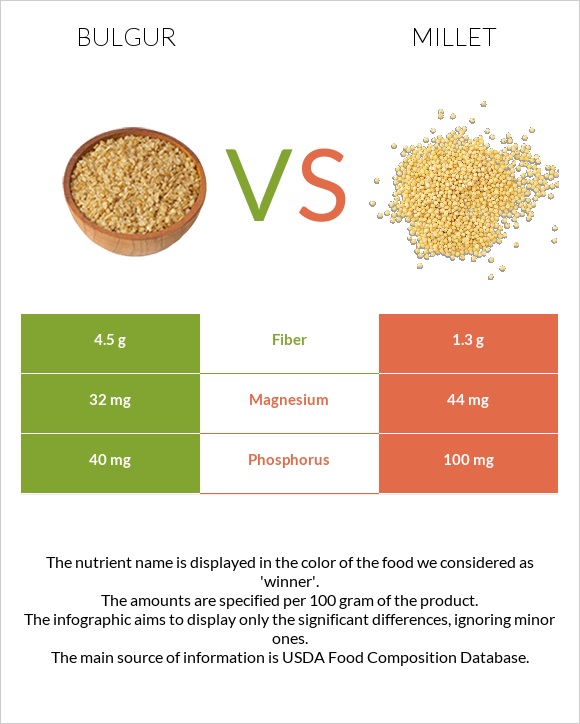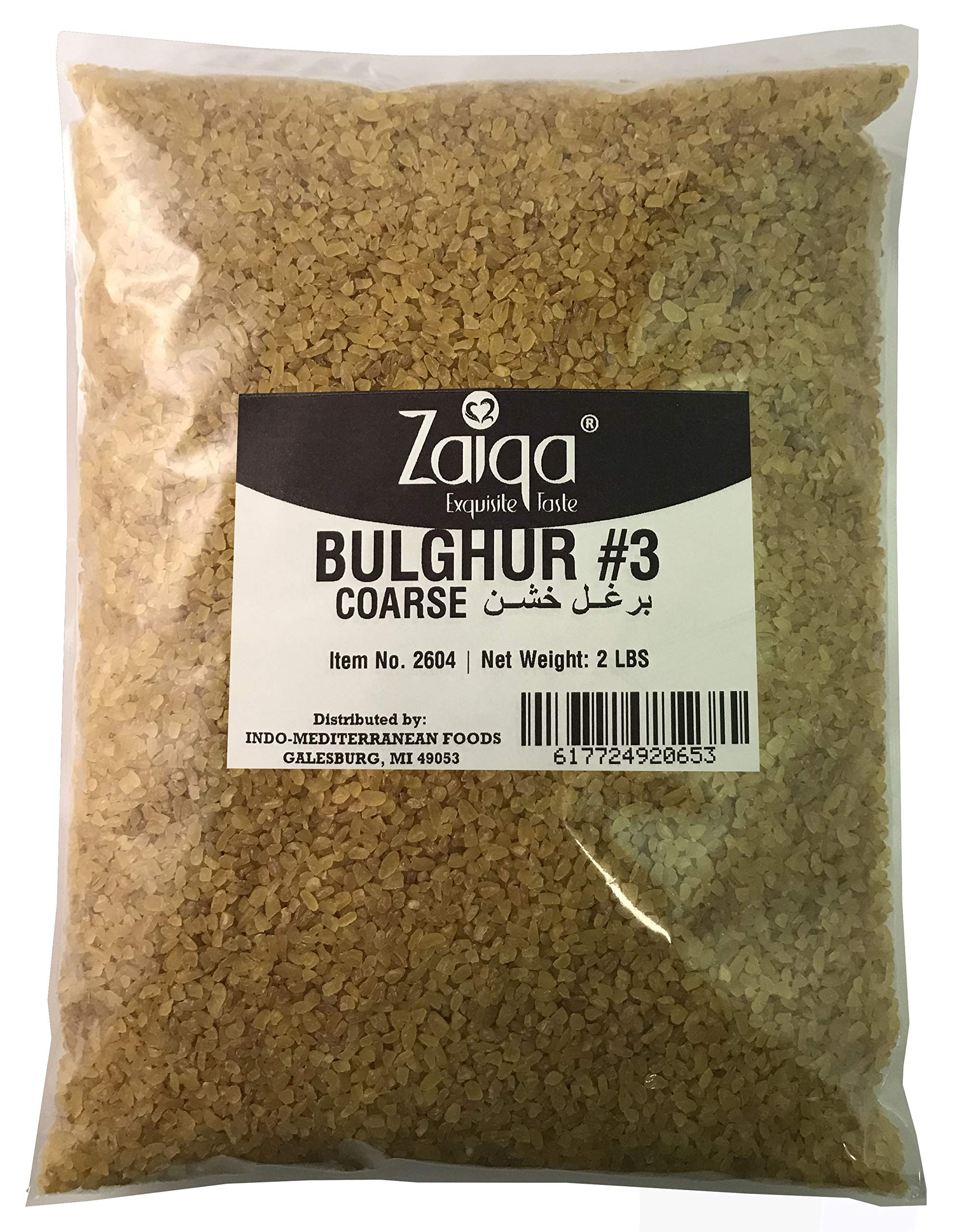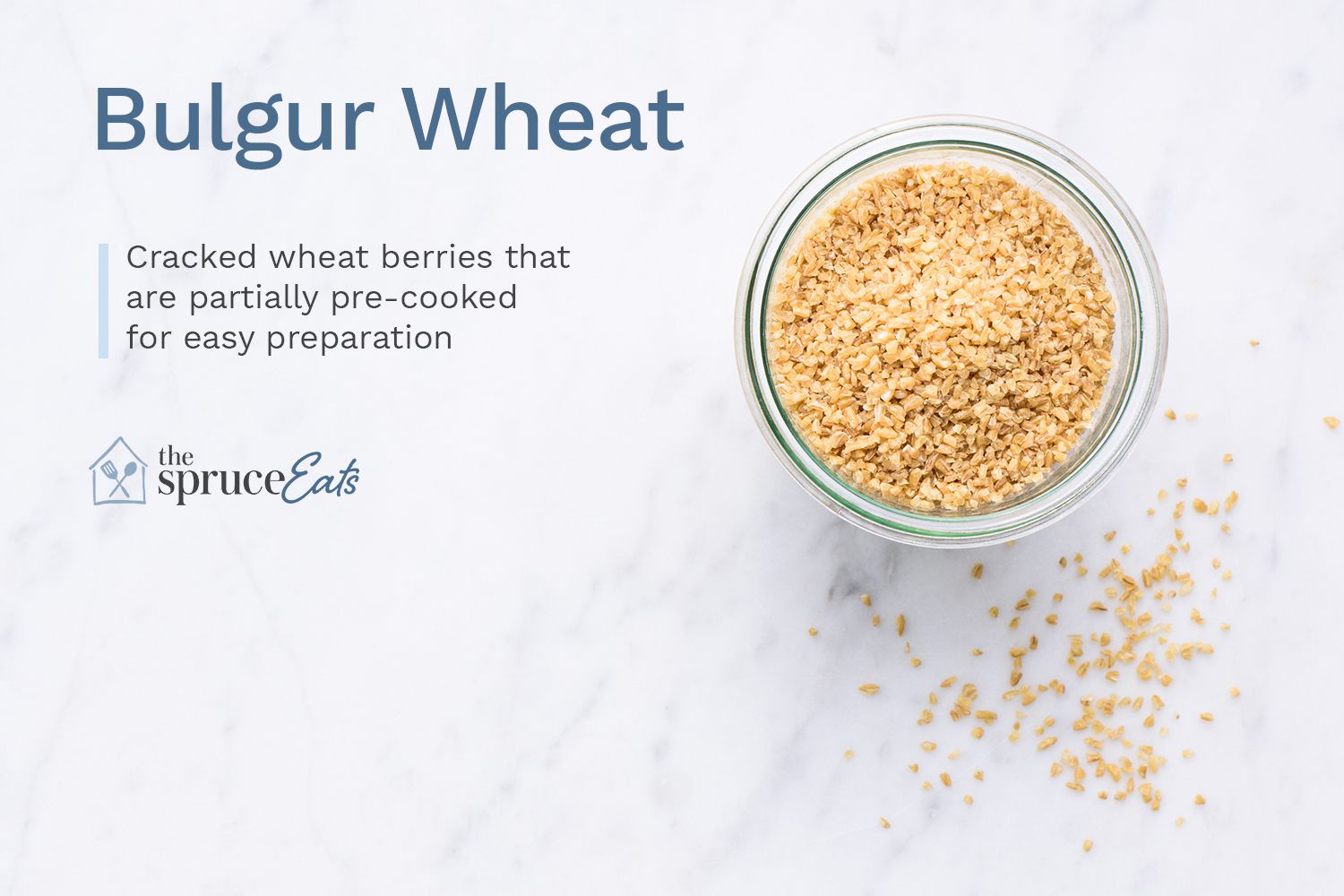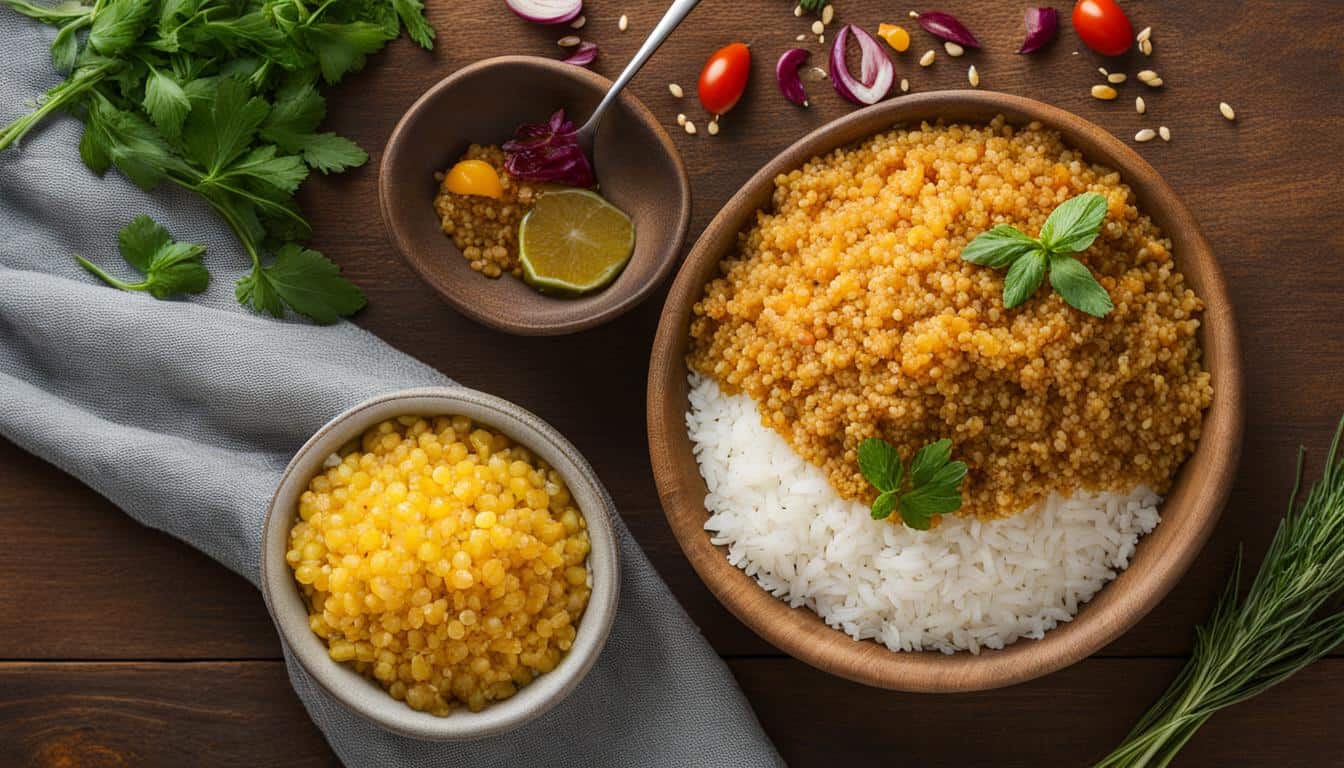Introduction

Bulgur wheat and rice are two popular grain options that offer a variety of nutritional benefits and culinary uses. While rice is widely consumed and known for its versatility, bulgur wheat offers a unique flavor profile and texture. In this article, we will compare the nutritional value, cooking methods, culinary uses, and environmental impact of bulgur wheat and rice. Whether you’re looking to add more whole grains to your diet or explore new recipes, understanding the differences between bulgur wheat and rice can help you make informed choices for a balanced and sustainable diet.
Brief Overview Of Bulgur Wheat And Rice
Bulgur wheat is a popular grain that is made from whole wheat kernels that have been parboiled, dried, and cracked. It has a nutty flavor and a chewy texture, making it a versatile ingredient in various dishes such as salads, pilafs, and stuffings. Bulgur wheat is known for its high fiber content and provides essential nutrients like iron, magnesium, and vitamin B6. On the other hand, rice is a staple food in many cultures and comes in various types such as white rice, brown rice, and wild rice. It is a good source of carbohydrates and provides energy, but its nutritional value can vary depending on the processing method. Rice is a versatile grain that can be used in a wide range of recipes, including stir-fries, sushi, and rice pudding. Both bulgur wheat and rice offer unique flavors and textures, making them excellent choices for diverse culinary experiences.
Nutritional Value
When comparing the nutritional value of Bulgur Wheat and Rice, there are some key differences to consider.
Bulgur Wheat is significantly higher in dietary fiber compared to Rice. It is also higher in protein and lower in carbohydrates. This makes bulgur a good choice for those looking to increase their fiber intake and maintain fuller for longer.
On the other hand, Rice is a good source of carbohydrates and provides energy. The specific nutrient content of rice can vary depending on the type, such as white rice, brown rice, or wild rice.
Overall, both grains offer essential nutrients and can be a healthy addition to a balanced diet.
Comparison Of Nutritional Content Between Bulgur Wheat And Rice

When comparing the nutritional content, Bulgur Wheat stands out as a healthier option compared to Rice. Bulgur Wheat is significantly higher in dietary fiber, providing around 6 grams per 100 grams compared to the 1 gram in Rice. It is also higher in protein, with about 3.6 grams compared to the 2.7 grams in Rice. Additionally, Bulgur Wheat is lower in carbohydrates, making it a suitable choice for those looking to reduce their carb intake. Overall, Bulgur Wheat offers a more nutrient-dense profile compared to Rice.
Health Benefits Of Bulgur Wheat And Rice
Both Bulgur Wheat and Rice offer several health benefits.
Bulgur Wheat is rich in dietary fiber, which aids in digestion and helps maintain bowel regularity. It also has a low glycemic index, making it suitable for individuals with diabetes or those watching their blood sugar levels. Additionally, Bulgur Wheat is a good source of minerals like iron, magnesium, and manganese, which are essential for various bodily functions.
On the other hand, Rice is gluten-free and easy to digest, making it suitable for individuals with gluten sensitivity or digestive issues. It provides energy and is a good source of vitamins and minerals, such as vitamin B, folate, and potassium.
Incorporating both Bulgur Wheat and Rice into your diet can contribute to a well-rounded and nutritious meal plan.
Cooking Methods
There are different cooking methods for preparing Bulgur Wheat and Rice.
Bulgur Wheat can be cooked by simmering it in water or broth until it becomes tender. It can also be soaked in hot water to soften it before using it in various dishes.
Rice is commonly cooked by boiling it in water. The ratio of water to rice may vary depending on the desired texture, such as fluffy or sticky rice. It can also be cooked using methods like steaming or using a rice cooker for convenience.
Both Bulgur Wheat and Rice can be versatile ingredients in various recipes.
Different Cooking Methods For Bulgur Wheat And Rice

Bulgur Wheat can be cooked by simmering it in water or broth until it becomes tender. This method is similar to cooking rice, but usually takes less time. Another option is to soak the bulgur wheat in hot water to soften it before using it in various dishes.
Rice, on the other hand, is commonly cooked by boiling it in water. The ratio of water to rice may vary depending on the desired texture, such as fluffy or sticky rice. Rice can also be cooked using methods like steaming or utilizing a rice cooker for convenience. These methods ensure that the rice is cooked evenly and comes out fluffy and separate.
Both Bulgur Wheat and Rice can be versatile ingredients in various recipes.
Texture And Flavor Profiles
Bulgur Wheat and Rice have distinct texture and flavor profiles.
Bulgur Wheat has a chewy and tender texture, similar to couscous. It retains a slight crunchiness even after cooking, adding a pleasant bite to dishes. In terms of flavor, Bulgur Wheat has a nutty and earthy taste, which complements a variety of ingredients and seasonings.
On the other hand, Rice has a soft and fluffy texture when properly cooked. It can range from sticky and clumpy to loose and separate, depending on the type of rice and cooking method used. Rice has a mild and neutral flavor, making it a versatile base for various cuisines and flavor profiles.
The contrasting texture and flavors of Bulgur Wheat and Rice allow for diverse culinary experiences, catering to different preferences and dishes.
Culinary Uses
Bulgur Wheat and Rice have versatile culinary uses and can be incorporated into a wide range of dishes.
Bulgur Wheat is commonly used in Middle Eastern cuisine, where it is the main ingredient in traditional dishes like tabbouleh and kibbeh. It can also be used as a substitute for rice or couscous in pilafs, salads, and stuffing.
Rice, on the other hand, is a staple in many Asian cuisines and is used in dishes like sushi, stir-fries, and fried rice. It can also be flavored and served as a side dish or used to make rice puddings and risottos.
Both grains offer flexibility in creating various flavor profiles and can be adapted to suit different cuisines and recipes.
Versatility Of Bulgur Wheat And Rice In Various Dishes

Bulgur Wheat and Rice are both incredibly versatile when it comes to culinary uses. They can be utilized in a wide range of dishes, offering different textures and flavors. Bulgur Wheat is often used in Middle Eastern cuisine, where it serves as the main ingredient in traditional dishes like tabbouleh and kibbeh. It can also be used as a substitute for rice or couscous in pilafs, salads, and stuffing. Rice, on the other hand, is a staple in many Asian cuisines and can be found in dishes such as sushi, stir-fries, and fried rice. With their adaptability to various cuisines and recipes, both grains provide endless opportunities for creating delicious and nutritious meals.
Popular Recipes Using Bulgur Wheat And Rice
Bulgur Wheat and Rice are versatile grains that can be used in numerous delicious recipes. Here are some popular dishes that feature these grains:
- Tabbouleh: A refreshing Middle Eastern salad made with cooked bulgur wheat, tomatoes, cucumbers, parsley, mint, and lemon juice.
- Rice Pilaf: A flavorful side dish made with rice, broth, and various seasonings such as onions, garlic, and herbs.
- Stuffed Bell Peppers: Rice or bulgur wheat can be used as a filling in stuffed bell peppers along with vegetables, herbs, and spices.
- Fried Rice: A classic Asian dish made with cooked rice, vegetables, eggs, and soy sauce, with the option to add meat or shrimp.
- Kibbeh: A traditional Middle Eastern dish made with bulgur wheat, ground meat, onions, and spices, shaped into patties or balls and either baked or fried.
These recipes demonstrate the versatility of both bulgur wheat and rice in creating flavorful and satisfying meals.
Sustainability And Environmental Impact
Sustainability and environmental impact are crucial considerations when evaluating the production of Bulgur Wheat and Rice. Both grains have different ecological footprints. Rice cultivation, especially in flooded paddies, can contribute to greenhouse gas emissions, water pollution, and habitat destruction. On the other hand, Bulgur Wheat production generally requires less water compared to rice cultivation. Additionally, practices such as organic farming and using renewable energy sources can help mitigate the environmental impact of both grains. By making sustainable choices and supporting eco-friendly farming practices, consumers can contribute to a more environmentally responsible food system.
Environmental Considerations Of Bulgur Wheat And Rice Production

When it comes to the environmental impact, there are several factors to consider in the production of Bulgur Wheat and Rice. Rice cultivation, particularly in flooded paddies, can contribute to greenhouse gas emissions, water pollution, and habitat destruction. On the other hand, Bulgur Wheat production generally requires less water compared to rice cultivation. Sustainable practices such as organic farming and using renewable energy sources can help mitigate the environmental impact of both grains. By making conscious choices and supporting eco-friendly farming practices, consumers can play a role in promoting a more sustainable and environmentally responsible food system.
Sustainability Practices In Bulgur Wheat And Rice Farming
Sustainability practices play a crucial role in reducing the environmental impact of Bulgur Wheat and Rice farming. Some sustainable practices include:
- Organic farming: Choosing to grow Bulgur Wheat and Rice using organic methods eliminates the use of synthetic fertilizers and pesticides, minimizing soil and water contamination.
- Crop rotation: Alternating crops between Bulgur Wheat and Rice fields helps maintain soil fertility, reduces pest and disease pressure, and prevents soil erosion.
- Water conservation: Implementing efficient irrigation techniques, such as drip irrigation or rainwater harvesting, minimizes water usage in both Bulgur Wheat and Rice cultivation.
- Renewable energy use: Opting for renewable energy sources, like solar or wind power, for farming operations reduces greenhouse gas emissions associated with energy consumption.
By adopting sustainable practices, farmers can protect the environment, preserve natural resources, and ensure the long-term viability of Bulgur Wheat and Rice production.
Conclusion
In conclusion, Bulgur Wheat and Rice are both nutritious grains that offer unique benefits and can be incorporated into a balanced diet. Bulgur Wheat stands out for its higher fiber and protein content, while Rice is a staple food for many cultures and provides energy and essential nutrients. The choice between Bulgur Wheat and Rice ultimately depends on personal preference and dietary needs. Both grains have their place in various culinary dishes and offer versatility in cooking methods. Consider the nutritional profile and desired texture when deciding to include Bulgur Wheat or Rice in your meals.
Summary Of Key Differences Between Bulgur Wheat And Rice

Bulgur Wheat and Rice have distinct differences in nutritional content. Bulgur Wheat has higher fiber and protein content, making it a great choice for those looking to increase their fiber intake or incorporate more plant-based protein into their diet. Rice, on the other hand, is higher in calories and carbohydrates, making it a good option for individuals who need energy for physical activity or have higher caloric needs. Additionally, Bulgur Wheat has a chewy texture and a nutty flavor, while Rice has a softer texture and a milder taste.
Recommendations For Incorporating Bulgur Wheat And Rice Into A Balanced Diet
Incorporating both Bulgur Wheat and Rice into a balanced diet is a great way to diversify your grain intake and maximize nutritional benefits. Here are some recommendations for incorporating these grains:
- Variety: Alternate between Bulgur Wheat and Rice to enjoy the unique flavors and textures they offer.
- Portion control: Be mindful of portion sizes and balance your plate with a combination of grains, vegetables, proteins, and healthy fats.
- Pairing: Pair Bulgur Wheat with beans, vegetables, or lean proteins for a nutritious and satisfying meal. Rice can be served with stir-fried vegetables, grilled meats, or in sushi rolls.
- Experiment: Try different recipes and cooking methods to discover your favorite ways to enjoy these grains.
Remember, a balanced diet includes a variety of wholesome foods, so it’s important to incorporate Bulgur Wheat and Rice along with other nutrient-rich ingredients for optimal health.
FAQ About Bulgur Wheat Vs Rice: Contrasting Grain Options
Q: What is Bulgur Wheat?
A: Bulgur wheat is a whole grain made from cracked wheat that is partially cooked. It has a nutty flavor and chewy texture.
Q: What is Rice?
A: Rice is a staple grain that comes in various types such as white rice, brown rice, basmati rice, jasmine rice, etc.
Q: What are the nutritional differences between Bulgur Wheat and Rice?
A: Bulgur wheat is higher in fiber and protein compared to most types of rice. It also contains more vitamins and minerals such as iron and magnesium.
Q: Which is more suitable for a gluten-free diet – Bulgur Wheat or Rice?
A: Rice is naturally gluten-free, making it a better choice for individuals who need to avoid gluten in their diet. Bulgur wheat, on the other hand, contains gluten.
Q: How do Bulgur Wheat and Rice differ in cooking methods?
A: Bulgur wheat cooks faster than most types of rice as it is partially pre-cooked. Rice requires longer cooking times and varied methods depending on the type of rice.
Q: Can Bulgur Wheat be used as a substitute for Rice in recipes?
A: Yes, Bulgur wheat can often be used as a healthier alternative to rice in recipes such as salads, pilafs, and stuffings, providing a different texture and flavor profile.

Hot Pot Chinese Restaurant, located in Mechanicsville, MD 20659, is a culinary destination that offers a delightful array of Chinese cuisine. From the cozy ambiance to the delectable dishes, Hot Pot Chinese Restaurant is dedicated to providing an exceptional dining experience for all patrons. Since our establishment, Hot Pot Chinese Restaurant has been committed to serving the finest Chinese food, offering a diverse menu that caters to a wide range of tastes. Whether you’re craving traditional favorites like Kung Pao Chicken and Mongolian Beef or seeking out more adventurous options like Szechuan Spicy Hot Pot, our menu has something to satisfy every craving.